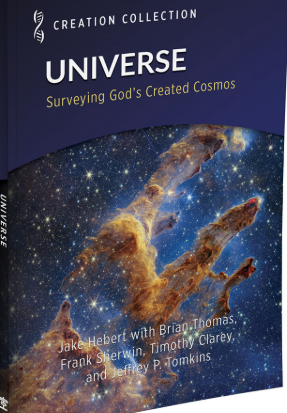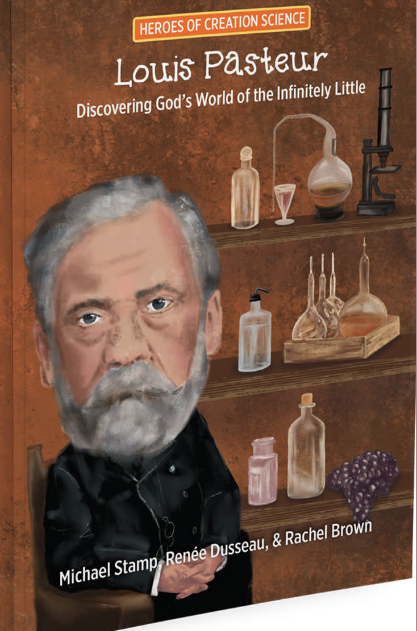Articles » Intermediate
The genius of the English language, many people say, is that it freely borrows from other languages. For example, the term “déjà vu” is French and it means “already seen.” We might more readily say “been there, done that!” Another equivalent expression is “nothing new under the sun.” Indeed some things are just so-o-o-o predictable. Among current events, none seems more aptly connected to the term déjà vu than the resistance of established scientists to criticism, any criticism, of their views. Read the rest of this entry »
Have you heard the sad story of the dinosaurs that succumbed to a watery catastrophe? Most young people in our province have heard the story of the Centrosaurus herd in Dinosaur Provincial Park. No doubt it would take quite some force to sweep huge, four-footed horned dinosaurs off their feet. The Centrosaurus dinosaurs of Alberta were only moderately large compared to some other horned designs such as Triceratops. Centrosaurus, for their part, were about 5 m (16 ft) long and perhaps 2.5 m (8 ft) tall. But they were certainly chunky and heavy. Read the rest of this entry »
In former generations, some misguided human biologists used to speculate that the various human races were in process of becoming increasingly different. This process, termed “divergence,” is an important component of evolution theory. The idea is that our world population is composed of more or less isolated groups or races of individuals who are quite similar to each other but significantly different from individuals of another race or ethnic background. Since the theory also, of course, includes the idea that our human population has been around at least one million or more years, it would then seem reasonable to assume that humanity had had lots of time to “diverge,” for the races to become more and more different from each other. Of course, if humans have only been around a short time, then racial differences might be merely superficial, more skin deep rather than significant and the human population might not really have “diverged” at all. Read the rest of this entry »
While secular astronomers and cosmologists agree that the universe is beautiful, they mean something altogether different from mere appearance of celestial objects. What the scientists appreciate is elegant mathematical equations. They care very little about actual bodies out in space. However, the relationship of mathematics to the universe is a matter of assumption. Read the rest of this entry »
The big surprise in April 1953 was not that the structure, and by implication the function, of DNA had been discovered, but rather who had done it. With established scientists like American Linus Pauling of Caltech in Pasadena, and British scientists Maurice Wilkins and Rosalind Franklin at King’s College, University of London, carrying out such research, it was expected that the problem would soon be solved. These scientists all had research funds, experience and appropriate equipment. Read the rest of this entry »
Some years ago during the summer, I was a counselor at a small camp in southeastern Quebec. Nature interpretation was my specialty. It was dark each evening by the time the campers converged on the washroom after campfire. The lights of that building attracted all manner of creepy crawlies. Frequently at this time I would hear a shout “Moxie, Moxie — what is this thing in the washroom?” Read the rest of this entry »
Do you ever take a moment to gaze at the night sky? During late August and early September of 2003, who could miss the sharply focused bright red spot in the sky? Other celestial bodies may have seemed faint and far away, obscured perhaps by light pollution, but that bright body claimed our whole attention anyway. It was Mars, the red planet, which burnt into our memories. The interesting thing is that this scene was just as remarkable and unique as it appeared. Astronomers tell us that Mars has not been this close to Earth in 60,000 years. They base such conclusions on computer models of planetary motion. However, in a young universe, it may be that Mars has never approached us this closely before. We live in special times. Read the rest of this entry »
Kurt P. Wise. 2002. Faith, Form, and Time: What the Bible Teaches and Science Confirms about Creation and the Age of the Earth. Broadman and Holman Publishers. Nashville, TN. Paperback. 287 pages.
Few Christians in science today are as qualified as Kurt Wise to talk about origins theory. His field of expertise is fossils and he obtained his Ph.D. in this discipline from Harvard University. His research director was none other than arch-evolutionist Stephen Jay Gould who well understood that Wise was a creationist. After graduation Dr Wise accepted a position in a small Christian college in Tennessee. There he has encouraged a nucleus of like-minded scientists to cooperate on highly technical research of relevance to creation. He does not appreciate superficial efforts. Indeed he has made himself unpopular in some circles through his insistence on high standards in scientific research and in the drawing of conclusions. Thus one might expect his new book to deal with science but it only lightly touches on the issue. What this book does is to provide a Scriptural defense of the creationist position. Read the rest of this entry »
Some people may wonder why we pay so much attention to fossils. These artifacts, of course, are the traces preserved in rock, of organisms that lived some time in the past. Well why do we concern ourselves so much about organisms which are dead and gone? After all, human biology, the environment, the wonderful diversity of organisms alive today, and new products and machines are interesting enough and of current value besides. Read the rest of this entry »
American scientists from the Institute for Creation Research and the Creation Research Society set up a committee to study dating techniques which are often used to justify claims that the earth is very old. This was several years ago. Specifically, these scientists wanted to find out how the numbers obtained from most studies on rocks, could be explained in the context of a relatively young earth. Read the rest of this entry »
Once the heady days of the moon landings had faded into history, many people grew bored with space exploration. Some Christians even concluded that the main objectives were atheistic or evolution-based anyway, so why should we support such endeavours?
It is certainly true that the main objectives for exploration of the solar system are based on evolutionary preconceptions. According to longtime NASA scientist Dr. Robert Jastrow, exploration of the moon initially did not seem very interesting to the NASA planners. In his 1989 book Journey to the Stars, Dr. Jastrow declares that the top people at NASA “were not terribly interested in the moon at that time, in fact, from a scientific point of view they did not know it existed …” (p 12). This was certainly strange when one considers that the mandate for the fledgling organization was to launch the US into space as soon as possible, and to explore what was there. Read the rest of this entry »
Junior high and high school students wonder what difference it makes whether the universe came about through a long process or whether God spoke all things into existence a relatively short time ago. The main thing, many suggest, is that we are here. Details are irrelevant, so why the big fuss over origins? Read the rest of this entry »
One of the “top arguments” against the creation world view is the well-documented development of insect resistance to insecticides. Many Neo- Darwinists claim that the historical development of pesticide resistance in insects is actually one of the strongest evidences of Neo-Darwinian evolution by mutations: “Insects that survived insecticides did so by helpful genetic mutations, and thus they bred a new generation that was not brought down by the farmers’ poison” (Larry Witham. 2002. Where Darwin Meets the Bible. Oxford University Press p. 78) Read the rest of this entry »
Man of Vision:
Man of Action
Ivan was a true gentleman, a fine educator, a good friend and an active Christian. He knew “everybody” in education in Alberta and many in politics. Moreover, he and his wife Irene, took great pleasure in supporting many worthwhile endeavours. In their later years at their acreage, they grew flowers and food which they generously shared. If anybody needed help, they were there for them. Read the rest of this entry »
It was just a matter of time, of course, following the discovery of geckos’ amazing ability to stick to smooth surfaces by means of molecular forces (see Let’s Learn from the Best), that another such animal would be discovered. One might have expected that the next discovery would be in another reptile, similar to the gecko. Imagine our surprise, then when we heard that the second example is nothing like the first. An article published last year in the Journal of Experimental Biology reveals that such a phenomenon has been discovered in a jumping spider (Evarcha aracuata) commonly found in Europe. While many creatures such as flies use an adhesive fluid (ugh) to stick themselves to surfaces, these jumping spiders use ‘dry adhesion’ like the geckos. Read the rest of this entry »






